|
A dagger is a knife with a very sharp point designed or capable of being used as a thrusting or stabbing weapon. Daggers have been used throughout human experience for close combat confrontations, and many cultures have used adorned daggers in ritual and ceremonial contexts. The distinctive shape and historic usage of the dagger have made it iconic and symbolic. A dagger in the modern sense is a weapon designed for close-proximity combat or self-defense; due to its use in historic weapon assemblages, it has associations with maleness and martiality. Double-edged knives, however, play different sorts of roles in different social contexts. In some cultures, they are neither a weapon nor a tool; but a potent symbol of manhood; in others they are ritual objects used in sacred body modifications such as circumcision. In this article we gonna discus only about medieval daggers, daggers of German fencing school. The earliest known depiction of a cross-hilt dagger is the so-called guido relief or quillon dagger. A number of depictions of the fully developed cross-hilt dagger are found in the Morgan Bible (c. 1240). Many of these cross-hilt daggers resemble miniature swords, with cross guards and pommels very similar in form to swords of the period. 13th century quillon dagger The knightly dagger evolved into the larger baselard knife in the 14th century. During the 14th century, it became fairly common for knights to fight on foot to strengthen the infantry defensive line. This necessitated greater dagger usage. At Agincourt (1415) archers used them to dispatch dismounted knights by thrusting the narrow blades through helmet vents and other apertures. The baselard was considered an intermediate between a short sword and a long dagger, and became popular also as a civilian weapon 14th century baselard A bollock dagger or ballock knife is a type of dagger with a distinctively shaped shaft, with two oval swellings at the guard resembling male testes ("bollocks"). The guard is often in one piece with the wooden grip, and reinforced on top with a shaped metal washer. The dagger was popular in Scandinavia, Flanders, Wales, Scotland and England between the 13th and 18th centuries, in particular the Tudor period. Within Britain the bollock dagger was commonly carried, including by Border Reivers, as a backup for the lance and the sword. A large number of such weapons were found aboard the wreck of the Mary Rose. The bollock dagger is the predecessor to the Scottish dirk. 14th-18th century bollock dagger A rondel dagger or roundel dagger was a type of stiff-bladed dagger in Europe in the late Middle Ages (from the 14th century onwards), used by a variety of people from merchants to knights. It was worn at the waist and might be used as a utility tool, or worn into battle or a jousting tournament as a side arm. The rondel dagger evolved in the 14th century from the early knightly dagger of the 12th to 13th centuries, matching the evolution of full plate armour. By the 15th century it had become the standard side-arm for knights, and would have been carried into battles such as the Battle of Agincourt in 1415. The contemporary post-mortem on the remains of King Richard III show that at the Battle of Bosworth in 1485 he suffered a rondel wound to the head before other fatal wounds. They were a knight's backup weapon to be used in hand-to-hand fighting, and as such one of their last lines of defense. Since they were able to penetrate a suit of armour (at the joints, or through the visor of the helmet), rondel daggers could be used to force an unseated or wounded knight to surrender, for a knight might fetch a good ransom if taken alive. In the 15th century, the rondel dagger also rose to popularity among the emerging middle class. Rondel dagger was very popular by fencing masters of 15th century. 14th-16th century rondel dagger In the Late Middle Ages, knives with blade designs that emphasized thrusting attacks, such as the stiletto, became increasingly popular, and some thrusting knives commonly referred to as 'daggers' ceased to have a cutting edge. This was a response to the deployment of heavy armor, such as maille and plate armour, where cutting attacks were ineffective and focus was on thrusts with narrow blades to punch through mail or aim at armour plate intersections (or the eye slits of the helmet visor). These late medieval thrusting weapons are sometimes classed by the shape of their hilt as either rondel or bollock daggers. The term dagger is coined in this time, as are the Early Modern German equivalents dolch (tolch) and degen (tegen). In the German school of fencing, Johannes Liechtenauer (Ms. 3227a) and his successors (specifically Andres Lignizer in Cod. 44 A 8) taught fighting with the dagger. Medieval dagger fighting was named degenfechten. We can see that from Paulus Kal fechtbuch 1470 - CGM 1507, where he named “Master Dietherich degen vechter”. 1470 - Paulus Kal - CGM 1507 First manuscript with dagger techniques was Nuremberg Hausbuch (MS 3227a). First manuscript with picture description was 1409 Fiore dei Liberi - Flos Duellatorum (Pisani-Dossi MS). Almost every fencing master made a dagger techniques in theirs fencing manuscriptes. .1409 - Fiore dei Liberi - Flos Duellatorum (Pisani-Dossi MS) Master Andreas Lignizer in Codex Danzig (Cod.44.A.8) wrote parts about short sword fencing, sword and buckler, ringen and dagger. From that manuscripte we can learn about Fencing with the Dagger or Combat Dagger - Seven important Rules. Here master Lignizer describe seven basic roules about dagger fighting:Fencing with the Dagger or Combat Dagger / Seven important Rules Points of attack 1410 - Fiore del Liberi - Fior di Battaglia (MS Ludwig XV 13) Mark the First Device with the Dagger If one stabs from above down to your face or chest / then drive forward with the left arm / and with the left hand grasp out from the inside over his right arm / and press him hard into your left side / and then stab him in the face with your dagger. The Other Device If he moves as if he will stab to your face / and makes a feint to you / and will stab you in the side / then block the stab with your left arm / and then twist your left hand up from below over onto his right hand / and press hard onto your chest / and stab him to the face with your dagger. The Third Device If he holds the dagger so that the disk stands by his thumb / and stabs to your face from above / then with your left hand drive up inward from below to his right arm / and out over his right hand / and trap his right hand in your left armpit / and attack him. The Fourth Device If he holds the dagger so that the disk stands by the thumb / and stabs to your side or torso / then with your left hand drive downward from above / and stab your dagger low under his right hand / and raise it up with your right hand / and press it hard to your chest / and twist yourself from him on your right side. The Fifth Device If he holds the dagger so that the disk stands on his little finger / and stabs down to you from above / then hold your dagger / and stab up from low on your left side / against his stab / over his right hand / and with your left hand grasp up under his right to your blade and push your arm hard on his / and pull downward / this is the trap. The Sixth Device If he has drawn his dagger / but you have not / and he stabs above to you / then drive up from below with your right arm / and grasp him with your right hand behind his right / and drive your left hand up from below to his right elbow / and take his arm hard above your left arm and throw him. The Seventh Device If he draws his dagger sooner than you (draw) yours / and stabs above to you / then block the stab with your left arm / and drive outward from inside over his right arm / and press it to your left side / and twist yourself from him to your right side / thus you break his arm. If you would throw him on his back / then spring to your left with your right leg / and grab under his right arm with your right hand / then you throw him over the hip. Depiction of combat with the dagger (degen) in Hans Talhoffer (1467) A knife fight is a violent physical confrontation between two or more combatants in which one or more participants is armed with a knife. A knife fight is defined by the presence of a knife as a weapon and the violent intent of the combatants to kill or incapacitate each other; the participants may be completely untrained, self-taught, or trained in one or more formal or informal systems of knife fighting. Knife fights may involve the use of any type of knife, though certain knives, termed fighting knives, are purposely designed for such confrontations – the dagger being just one example.Medieval man-to-man combat is a brutal science. It uses techniques which are efficient and ruthless. The goal is to put the opponent down quickly. A Medieval fight would be brief. Medieval fighters strive for powerful attacks. They do not use light techniques. Every strike is made to do damage. The power is needed for two reasons. First, power puts a man down fast. Light techniques may hurt, but they also waste time. Second, a soldier would often have to attack an armored opponent. Whether the armor was a leather jack, chain mail or plate armor, it took added strength to cause harm to the man inside the suit. As for defense, the main trick of Medieval fighters was to not be where the strike fell. They would sidestep, duck, dodge and slip. Backing this up were various parries, deflections and blocks. A fighter would try to deflect a blow, rather than block it by catching its full force on shield or weapon. Many a defense was also a counterstrike. Fechtbuchs show techniques that deflect the weapon and inflict damage to the adversary in the same motion. Armored degenfechten The principles of dagger fighting are that the strikes must be simple, direct, fast and short. Always take initiative and keep moving. Strike to the openings, don't defend without offense – it is dagger vs dagger, not unarmed against dagger, so use the dagger you have. Use soft technique when he is strong, use strong technique when he is weak. Better to do one good strike than six bad ones - committed attacks, keep point on target. Better strike high than low - 80% of techniques are against high stab. Better attack on the sides than straight. Never duck out of the way of your opponent’s attack. You will most likely get a knife in your face. Stand upright as much as possible. Don’t fight anyone significantly taller or shorter than yourself unless you are both experienced knife fighters. Keep all attacks below shoulder height. Attacks should be cuts to or across your opponent's body - do not use a stabbing motion with the blade straight and tip-forward. When using a thrust, ensure your wrist is not locked. Speed is of the essence - get your weapon in and out as quickly as possible to get back out of distance. Much of the art of dagger fighting lies in feinting to confuse the opponent, a feint is a partially delivered attack, stopped short and withdrawn, or an off target (missing) attack stopped and withdrawn, or a grapple, or other sudden hand movement to threaten a grapple. A grapple involves catching the opponent’s hand or wrist with your hand, this not only prevents your opponent from attacking properly and allows you to move their arm about to maneuver for a good position to strike them. It is possible, even with unarmored hands, it is possible to bat aside thrusts with the back of the hand. Unarmored degenfechten Guard positions we can separate to: High guard: dagger forward and high, left hand back and middle height High guard Low guard: dagger low and backward and slightly forward, left hand against dagger Low guard Wide guard: arms spread wide, left hand open ready to grapple. In this guards we can put armed hand forward of body or near body. An upper description of guards was with armed hand forward. If armed hand is near body unarmed hand is forward. Very important thing in defending your self against dagger attack is line of defense. If opponent attack you on your right side, you will defense your self with armed hand (right hand) and move your body to the left side of opponent. If opponent attack you on your left side, you will defend your self with unarmed hand (left hand) and move your body to the right side of opponent. Same thing is with upper and lower shield with dagger. You will move your body to the right or left side of opponent attack line. You never stay on the spot when opponent attack you because he may break your block and stab you. Wide guard Blocks we can separate to: upper and lower shield with dagger, left high block, right high block, middle left and right block and lower left and right block. High shield with dagger Low shield with dagger Block with left hand .Block with right hand Codex Wallerstein - Dagger section Demonstration of dagger in Pavone Canavese, Italy, 2014 at Ferie Medievale
0 Comments
Leave a Reply. |
MarkoUndermaster of historical fencing ArchivesCategories
All
|
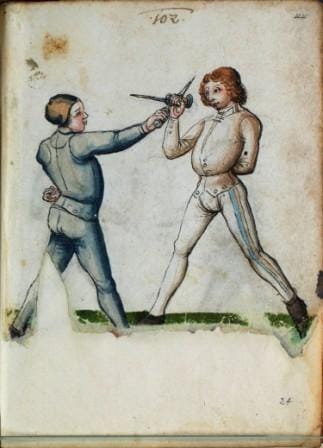
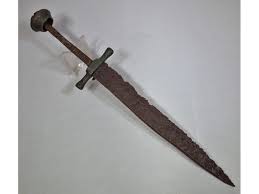
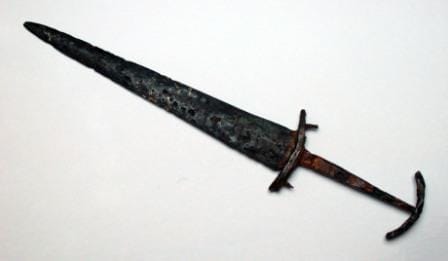
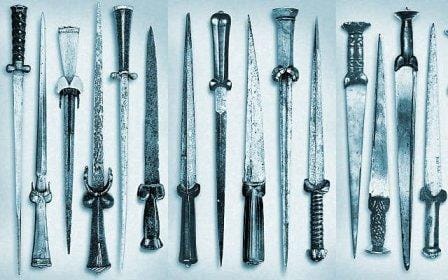
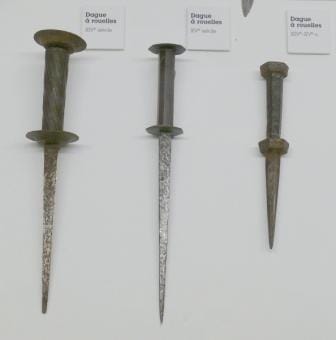

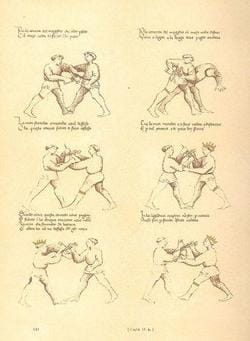
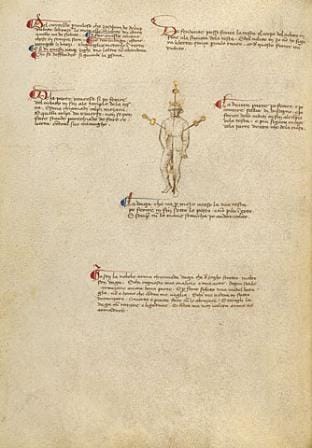
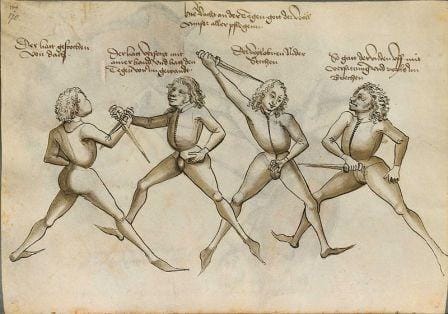
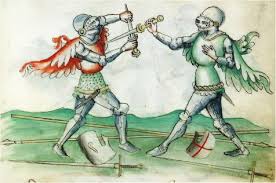
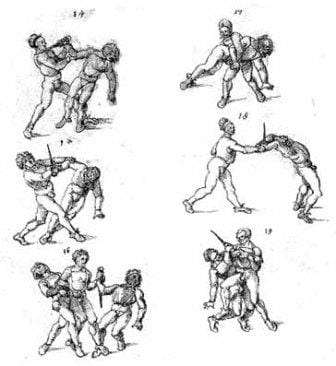
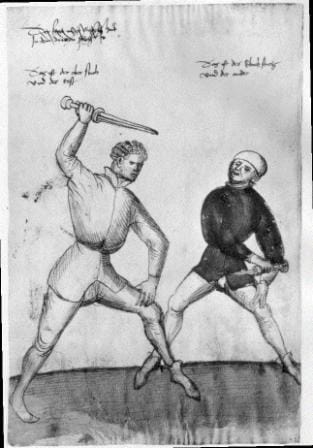
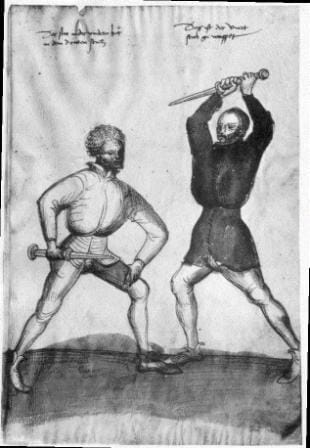
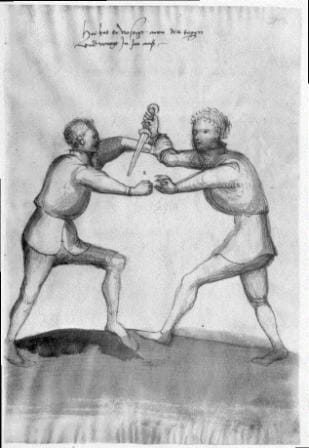
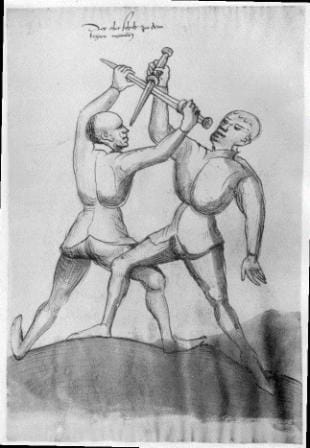
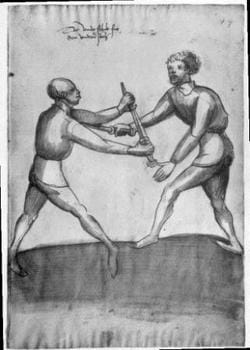
 RSS Feed
RSS Feed
